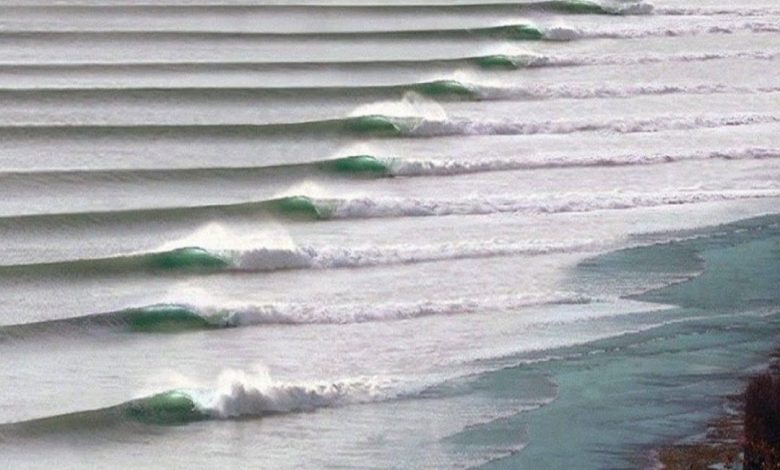
ADVERTISEMENT
The Beauty of Perfectly Formed Waves
The image of the perfectly formed waves rolling into the shore in parallel lines is a captivating visual phenomenon that showcases the power and beauty of nature. These waves, appearing almost identical in size and shape, create a mesmerizing pattern that captures the viewer’s attention and evokes a sense of tranquility and awe.
### The Science Behind Wave Formation
ADVERTISEMENT
Waves are formed by the wind as it blows across the surface of the water. The friction between the wind and the water’s surface creates ripples, which grow into waves as the wind continues to blow. The size and strength of the waves depend on several factors, including wind speed, the duration of the wind, and the distance over which the wind blows (known as the fetch).
In the image, the waves appear to be perfectly synchronized, creating a stunning visual effect. This phenomenon can occur when waves travel long distances across the ocean, allowing them to align in a uniform pattern by the time they reach the shore. Such waves are often referred to as “swell” waves, and they can create ideal conditions for surfers and beachgoers alike.
### The Artistic Appeal
The aesthetic appeal of the image lies in its symmetry and repetition. The parallel lines of waves create a rhythmic pattern that is pleasing to the eye. This type of natural symmetry is often sought after in photography and art, as it provides a sense of balance and harmony.
The contrast between the white foam of the breaking waves and the deep blue-green of the water adds to the visual impact of the image. The gentle curve of each wave as it prepares to break creates a dynamic yet calming effect, drawing the viewer into the scene.
ADVERTISEMENT
### The Impact of Perfect Waves on Coastal Ecosystems
Beyond their visual beauty, waves play a crucial role in coastal ecosystems. They help to shape shorelines, transport sediments, and provide habitats for various marine species. The energy of waves can influence the distribution of sand and other materials along the coast, affecting the formation of beaches, dunes, and other coastal features.
Waves also contribute to the health of marine ecosystems by facilitating the exchange of nutrients and oxygen between the water and the atmosphere. This process supports the growth of phytoplankton, which forms the base of the marine food web.
### Conclusion
The image of perfectly formed waves rolling into the shore is more than just a beautiful photograph; it is a testament to the intricate and powerful forces of nature. The symmetry and uniformity of the waves create a captivating visual effect, while also highlighting the important role waves play in shaping coastal environments and supporting marine life.
ADVERTISEMENT
Whether admired for their aesthetic appeal or studied for their scientific significance, perfectly formed waves are a reminder of the beauty and complexity of the natural world.




